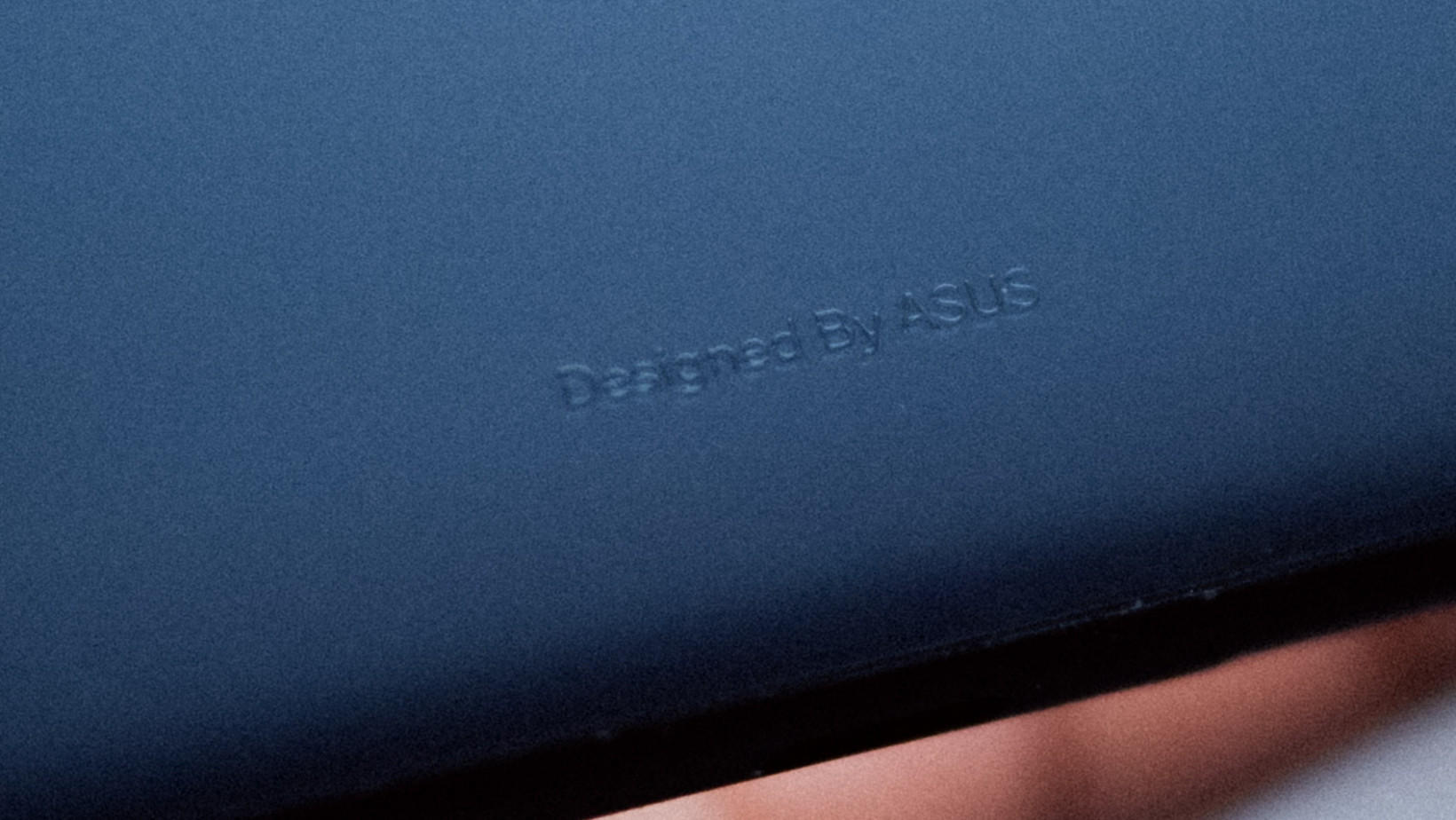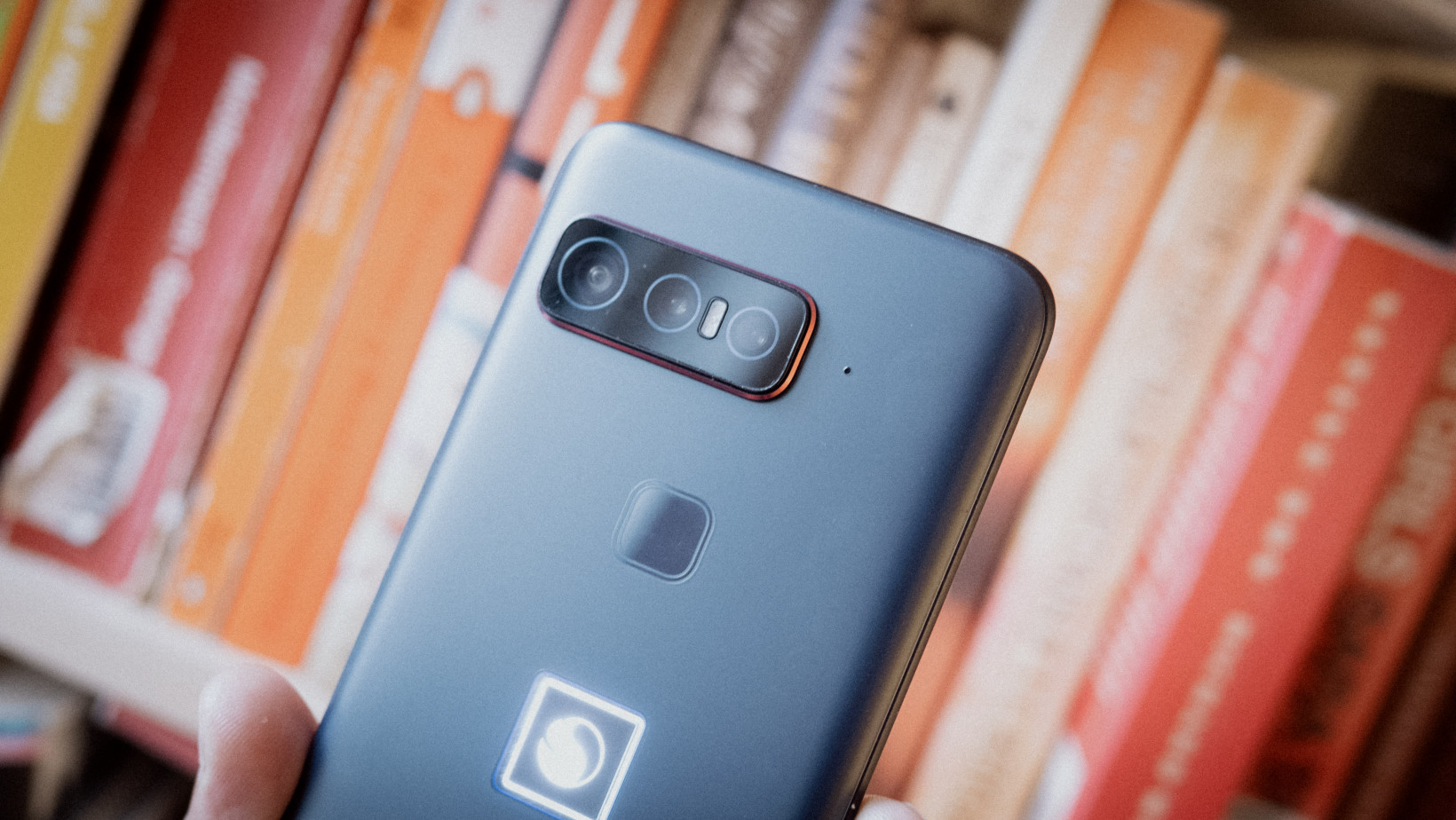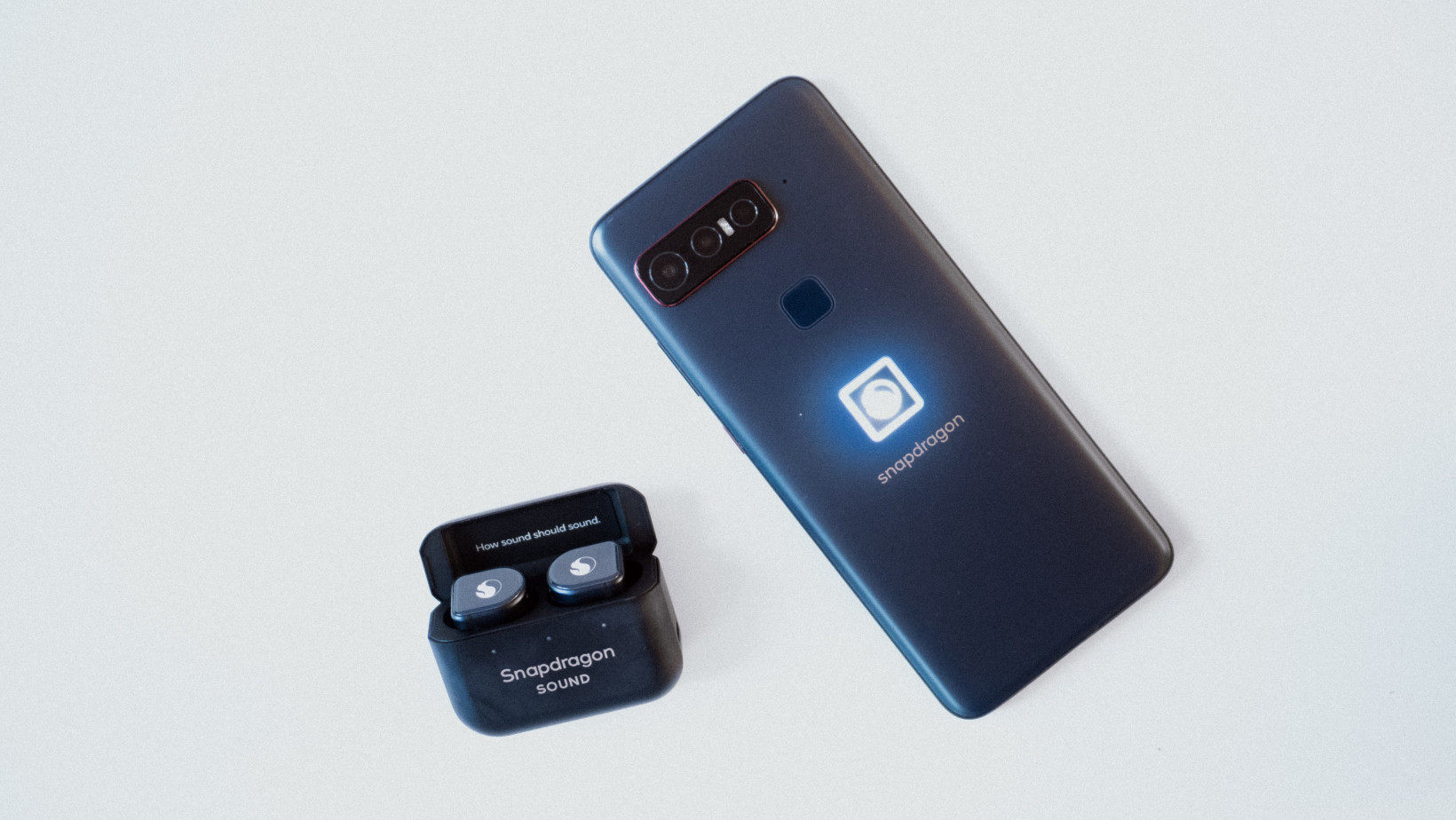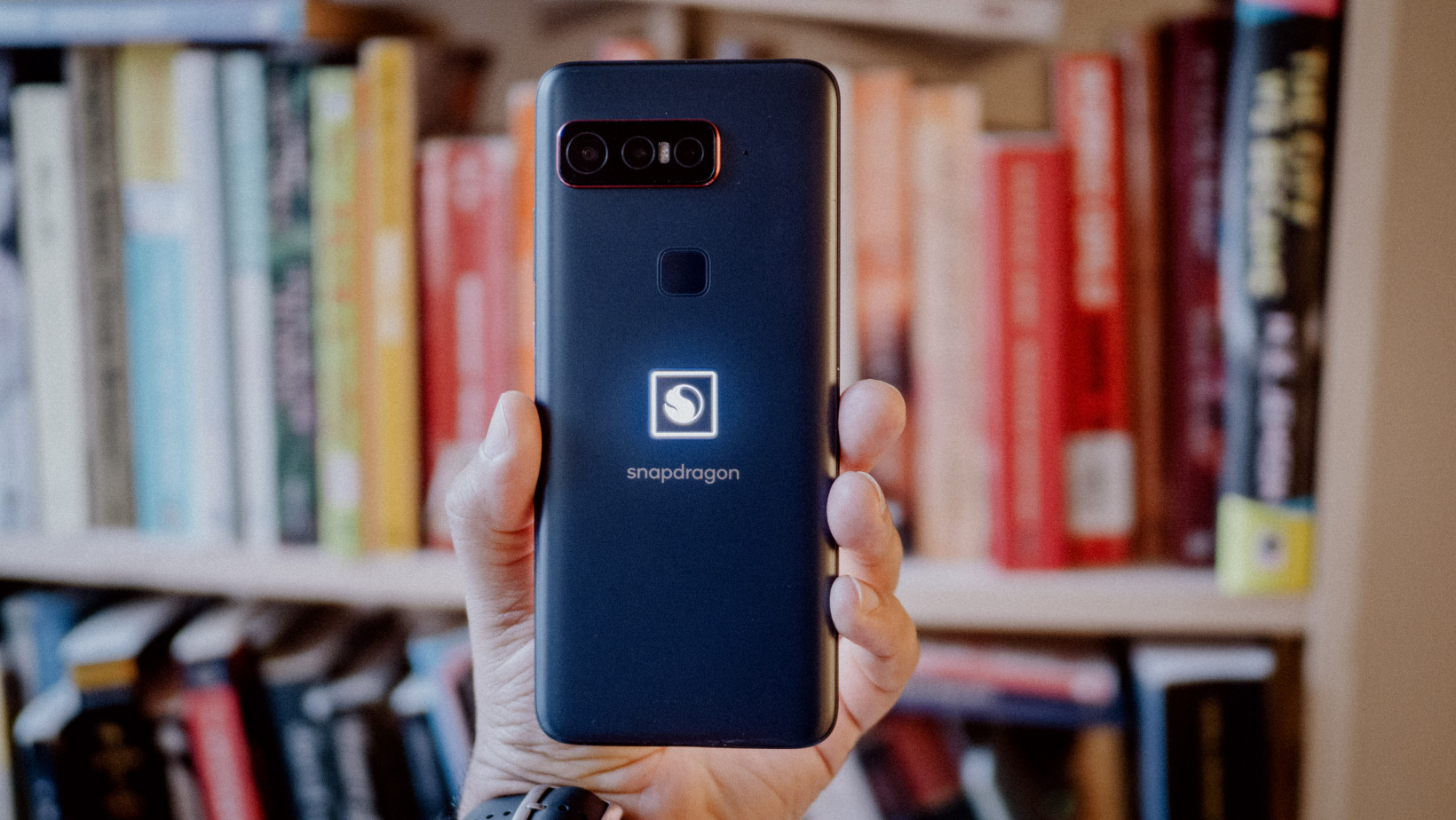It is a phone that I mostly enjoyed using, but it left me with myriad questions about the reasoning behind the concept. I’m not going to go through much of the phone’s specs and such — you can read our announcement article for that— but instead, I’ll walk you through some of the puzzling thoughts I had while testing the device.
Is it a Qualcomm or Asus phone?
All of the phone’s branding is around Qualcomm and Snapdragon, but Qualcomm insists it is an Asus phone. The phone’s website makes two small-print mentions of Asus and 32 mentions of Qualcomm, although you do have to pre-order it from Asus. The phone itself is full of Snapdragon branding, complete with a light-up logo, and only says ‘designed by Asus’ in small print on the back and a few places in the software. No matter how much Qualcomm insists it’s an Asus phone, it’s the Qualcomm branding that stands out, and that’s what buyers will focus on.
Who decided ‘Smartphone for Snapdragon Insiders’ is a good name?
It’s annoying to even talk about the phone. SSI isn’t a good acronym, but there’s no other way to really abbreviate the name that makes sense. ‘Snapdragon Insiders phone’ has too many syllables, but you can’t just call it the ‘Snapdragon phone,’ because that just describes the majority of the Android market. You shouldn’t call it ‘the Qualcomm phone’ because, as Qualcomm made very, the phone is designed, manufactured, and supported by Asus. To give just one example of the awkward branding: when I called Google Fi to ask if the SSI would be compatible with the network, two different support reps told me something along the lines of “sir, Snapdragon is a processor, not a phone,” with the air of a someone trying to explain how TikTok works to their grandpa. I just don’t know how that name made it through the marketing departments at Qualcomm and Asus. You can barely even fit it in a headline if you want to call the thing by its full name.
Who are these Snapdragon Insiders?
Qualcomm is one of the most important companies in consumer technology; its hardware shows up on most smartphones around the world. And yet the company seems to barely have a shred of mindshare outside of tech circles, and only a little more within them. I find it hard to believe there are all that many people looking to buy a $1,500 Qualcomm-branded-made-by-Asus phone, no matter how fancy the included headphones are. Qualcomm launched its Insider program in March, with vague promises of exclusive experiences and perks. Qualcomm says there are currently over 1.5 million Insiders, but there’s a difference between signing up for an online community and actually being a Snapdragon ‘enthusiast.’ I’m not sure I’ve ever seen someone be excited about anything Qualcomm the way they might about phone makers like Samsung or OnePlus. Even among other chip designers like Intel, Nvidia, and AMD, Qualcomm seems to be low on the hype scale. Of course, the existence of this phone shows that Qualcomm is trying to build up that mindshare, but it also shows the company doesn’t know how exactly it wants to present itself in the mobile space.
Why is the battery so small?
This might be the most puzzling decision for me. This is a phone with a 6.8″, 144Hz AMOLED display, a Snapdragon 888 processor, and some legit camera chops. It’s a phone clearly aimed at power users. And yet somehow Qualcomm/Asus thought it would be smart to use a puny (for this size and price category) 4,000 mAh battery? For reference, that’s a hair smaller than the battery on the Pixel 5 (4,080 mAh), a phone with a much smaller screen (6″) and a far less demanding processor (Snapdragon 765G).
In practice, the phone’s battery was okay. Qualcomm has clearly made some optimizations, so it lasted a bit longer than I expected, and it was usually able to get me through a day with about 5-6 hours of screen-on time. But I’ve gotten used to phones that I rarely have to worry about charging, and the SSI is not one of them. Why cripple the battery like that? Almost every phone this size I can think of has a significantly larger battery, including the Asus ROG5 that the SSI is clearly based off. That phone has a 6,000 mAh battery. Sure, the SSI has a 65W charger that can fully charge the battery in under an hour, but that’s not exactly a rare feature these days. Mostly though, I’m pretty darn sure 99% of people who would consider themselves a ‘Snapdragon enthusiast’ would take an extra millimeter or gran for a beefier battery.
Why is Qualcomm’s under-display fingerprint tech on the back of the phone?
I do actually know the answer to this question: Qualcomm’s ultrasonic fingerprint reader doesn’t work with the specific type of OLED panel in the phone… which is dumb. The phone should have been designed with a different panel. But hey, it’s technically an Asus phone, and that’s what they had available, I guess. Annoyingly, the fingerprint sensor is barely differentiated from the rest of the back glass, making it awkward to locate at first. I get that the phone is supposed to show off Qualcomm tech, but it really doesn’t make sense if you’re not using the tech for its intended purpose.
Why isn’t the phone using Qualcomm’s best mobile processor?
The SSI uses the Snapdragon 888, but Qualcomm’s best processor at the time of release is the 888+. Granted the only difference for the 888+ is a 5% faster clock speed, and Qualcomm says the SSI was in development before the 888+ was released… but again, it just seems like a case of bad planning. It is, you know, a Qualcomm phone. Kind of.
Why is the camera software unfinished?
The unit I’ve been testing is not the camera’s ‘final form,’ so to speak. According to Qualcomm, later this month, the phone will receive a significant camera update that enables a DxOMark score of 133, the highest in the US and 6th globally. This update will include better autofocus, better overall texture/noise performance, and improved night shot quality. It uses better noise reduction for both stills and video, improves the noise reduction, makes the live preview more accurate, and makes the telephoto and wide-angle cameras better in particular. As such, it didn’t make much sense for me to review the camera yet. So far it seems like a really nice camera — at least with the primary sensor — but in its current form it doesn’t particularly stand out against Samsung, OnePlus, and Google.
Just… why?
This is an enthusiast phone. So why is the bootloader locked? It could have been a great option for tweakers, given its aim toward power users. Qualcomm was not able to confirm how long Asus would provide software updates for the device. Four years of security updates were promised, which is nice, but reviewers weren’t even guaranteed an update to Android 12, which is right around the corner. Why is there a battery-draining light-up logo on the back when the battery is already so small? It doesn’t even RGB. The phone is supposed to offer super high-quality voice transmission, but this wasn’t ready in time for review. There is no wireless charging. I’ll now remind you that the phone costs $1,500. I guess Snapdragon Insiders don’t care about such frivolities.
What do I like about the phone?
This piece will come off as pretty negative, but I do actually like a lot of things about the phone.
I appreciate the relatively minimal design. I like the combination of deep blue with red accents. I likewise appreciate the minimal software design. It’s mostly a stock Android phone, with a few extra niceties thrown in. The screen quality seems great, and that 144Hz refresh rate is very nice. The phone is extremely smooth, holding onto that high refresh rate with nary a hiccup. It’s one of the smoothest phones I’ve used, right up there with the OnePlus 9 Pro The camera quality, especially from the primary camera, is quite good, and night shots were excellent. 512GB of storage and 16GB or RAM is more than most laptops, so the phone should be a worthwhile long-term investment. The MW08 headphones included with the device are stylish and sound nice, although I tested a prototype unit that was not yet enabled for high-resolution streaming. The microphone quality seems really good. It has all the 5G bands. All of them! Travel the world and never worry about signal compatibility. Plus it has dual 5G SIM cards. I noticed the phone seemed to have a particularly strong Bluetooth connection, for instance, maintaining a connection while walking past some blocks where my headphones would often cut out. Qualcomm offers multiple ways to tweak the CPU performance to maximize battery life vs performance. That said, the phone gets really hot in its highest performance mode. Anandetech goes into detail on this front. It’s one of the few phones to offer Qualcomm’s AptX Adaptive codec which can tweak itself to adjust for latency vs sound quality. There are few compatible headphones, unfortunately. I actually really like the idea of a phone that has optimized Qualcomm’s processor and various software and wireless technologies. Rarely do you get to see a phone that is truly optimized for the hardware inside it, and you’d expect Qualcomm to offer the best iteration of these.
There is a lot to like here. I’m just not sure it makes sense for most people.
Should you buy it?
Probably not. I like the phone itself. I feel like it’s targeted at users like me. But I got to test it for free. If the SSI were priced a little more reasonably — even if it meant offering smaller storage configurations or an option without the fancy headphones — I think it could be a compelling option. If it had a 4,500+ mAh battery, even more so.
As it stands, the phone just seems to be competing in a space firmly occupied by OnePlus — the power user phone without too much bloatware. Qualcomm does have some neat tricks, and it’s nice to see all its technologies on display, but it’s not enough that I think you should buy it over the competition at this price. It doesn’t help that the camera and audio software were unfinished. At the time of review. But hey, if you’re one of those diehard Snapdragon fans, maybe you’re already putting in a pre-order. I just wish Qualcomm had put more thought into the concept and execution behind this phone — it might have actually made some new Snapdragon fans. Maybe next time Qualcomm will come out with something more fleshed out — hopefully with a better name, too.




